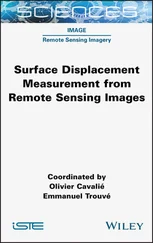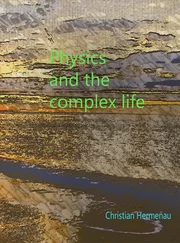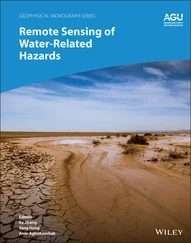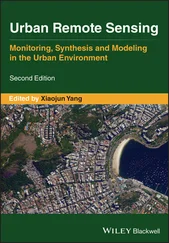Subjects: LCSH: Remote sensing.
Classification: LCC G70.4 .E43 2021 (print) | LCC G70.4 (ebook) | DDC 621.36/78–dc23
LC record available at https://lccn.loc.gov/2020051941LC ebook record available at https://lccn.loc.gov/2020051942
Cover Design: Wiley
Cover Image: © NASA/JPL
To the memory of my dear friend and coauthor, Jakob van Zyl, who left this Earth a few days after we completed this edition.
Charles
The advent of the space age opened a whole new dimension in our ability to observe, study, and monitor planetary (including Earth) surfaces and atmospheres on a global and continuous scale. This led to major developments in the field of remote sensing in the scientific, commercial, national security, and technical aspects. In addition, ongoing technological developments in detectors and digital electronics opened the whole electromagnetic spectrum to be used for detecting and measuring ever‐finer details of the emitted and reflected waves that contain the “fingerprints” of the medium with which they interact. Spaceborne imaging spectrometers from the ultraviolet to the far infrared are being developed to acquire laboratory quality spectra for each observed surface pixel or atmospheric region, thus allowing direct identification of the surface or atmospheric composition. Multispectral polarimetric and interferometric imaging radars are providing detailed maps of the surface morphology, dynamics, cover and the near‐subsurface structure, as well as three‐dimensional maps of precipitation and cloudy regions in the atmosphere. Active microwave sensors are being used to monitor, on a global basis, the dynamics of the ocean: its topography, currents, near‐surface wind, and polar ice. Passive and active atmospheric sounders provide detailed profiles of the atmosphere and ionosphere characteristics: temperature, pressure, wind velocity, and electron content. Large‐scale multispectral imagers provide repetitive global images of the surface biomass cover and monitor our planet's environmental changes resulting from natural causes as well as from the impact of human civilization.
These capabilities are also being applied more extensively in exploring the planets in our solar system with flyby and orbiting spacecraft. All the major bodies in the solar system have been visited and explored. The surface of Venus has been mapped globally by radar, and Mars has been explored with orbiters and rovers. Jupiter and Saturn, as well as their satellites, have been mapped by sophisticated orbiters.
The next decade will also see continuing advances in our use of spaceborne remote sensing techniques to understand the dynamics of our own planet and its environment. A number of international platforms continuously monitor our planet's surface and atmosphere using multispectral sensors, allowing us to observe long‐term global and regional changes. More sophisticated systems are being deployed to globally measure ocean salinity, soil moisture, gravity field changes, and surface tectonic motion. These systems will make full use of new developments in technology, information handling, and modeling.
Remote sensing is a young discipline that calls on a wide range of specialties and crosses boundaries between traditional scientific and technological disciplines. Its multidisciplinary nature requires its practitioner to have a good basic knowledge in many areas of science and requires interaction with researchers in a wide range of areas such as electromagnetic theory, spectroscopy, applied physics, geology, atmospheric sciences, agronomy, oceanography, plasma physics, electrical engineering, and optical engineering.
The purpose of this text is to provide the basic scientific and engineering background for students and researchers interested in remote sensing and its applications. It addresses (1) the basic physics involved in wave–matter interactions, which is the fundamental element needed to fully interpret the data, (2) the techniques used to collect the data, and (3) the applications to which remote sensing is most successfully applied. This is done keeping in mind the broad educational background of interested readers. The text is self‐comprehensive and requires the reader to have the equivalent of a junior level in physics, specifically introductory electromagnetic and quantum theory.
The text is divided into three major parts. After the introduction, Chapter 2gives the basic properties of electromagnetic waves and their interaction with matter. Chapters 3– 7cover the use of remote sensing in solid (including ocean) surface studies. Each chapter covers one major part of the electromagnetic spectrum (visible/near infrared, thermal infrared, passive microwave, and active microwave, respectively). Chapters 8– 12cover the use of remote sensing in the study of atmospheres and ionospheres. In each chapter, the basic interaction mechanisms are covered first. This is followed by the techniques used to acquire, measure, and study the information (waves) emanating from the medium under investigation. In most cases, specific advanced sensors flown or under development are used for illustration.
The text is generously illustrated and includes many examples of data acquired from spaceborne sensors. This book is based on an upper undergraduate and first‐year graduate course that we teach at the California Institute of Technology to a class that consists of students in electrical engineering, applied physics, geology, planetary science, astronomy, and aeronautics. It is intended for a two‐quarter course. This text is also intended to serve engineers and scientists involved in all aspects of remote sensing and its application.
This book is a result of many years of research, teaching, and learning at Caltech and the Jet Propulsion Laboratory. Throughout these years, we have collaborated with a large number of scientists, engineers, and students who helped in developing the basis for the material in this book. We sincerely thank them for creating a most pleasant atmosphere for work and scientific “enjoyment.” To name them all would lead to a very long list; however, we would like to acknowledge the numerous researchers at JPL who were kind enough to read and provide suggestions on how to improve the text for this and earlier editions – they include M. Abrams, M. Chahine, J. Curlander, D. Diner, M. Freilich, M. Gierach, R. Greene, A. Khazendar, Y. Lou, D. McCleese, P. Rosen, D. Vane, S. Vannan, J. Waters, and H. Nair – as well as our students and Postdocs at Caltech, who hopefully became interested enough in this field to carry the banner. We want also to acknowledge, as immigrant Americans, the golden opportunities that this great country provided us and fellow immigrants to follow their dreams.
We could not have completed this book without the dedicated assistants and artists who typed the text of the First Edition, improved the grammar, and did the artwork, in particular, Clara Sneed, Susan Salas, and Sylvia Munoz. Special thanks to Priscilla McLean for helping with this edition.
Charles Elachi and Jakob van Zyl
Pasadena, California, August 2020
Remote sensing is defined as the acquisition of information about an object without being in physical contact with it. Information is acquired by detecting and measuring changes that the object imposes on the surrounding field, be it an electromagnetic, acoustic, or potential field. This could include an electromagnetic field emitted or reflected by the object, acoustic waves reflected or perturbed by the object, or perturbations of the surrounding gravity or magnetic potential field due to the presence of the object.
The term “remote sensing” is most commonly used in connection with electromagnetic techniques of information acquisition. These techniques cover the whole electromagnetic spectrum from the low‐frequency radio waves through the microwave, submillimeter, far infrared, near infrared, visible, ultraviolet, x‐ray, and gamma‐ray regions of the spectrum.
Читать дальше












